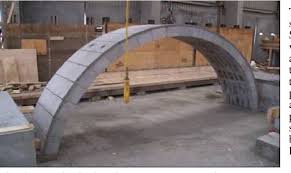Introduction:
In the realm of construction, innovation is the cornerstone of progress. Among the latest advancements revolutionizing the industry is the emergence of flexible concrete. This groundbreaking material not only promises to redefine the way we build but also holds the key to addressing some of the most pressing challenges facing the construction sector today, from sustainability to resilience. In this blog post, we delve into the intricacies of flexible concrete, exploring its properties, applications, and the transformative impact it is poised to have on the future of construction.
Understanding Flexible Concrete:
At its core, flexible concrete, also known as bendable or ductile concrete, is a composite material that possesses the unique ability to deform under stress without fracturing. Unlike conventional concrete, which is brittle and prone to cracking when subjected to significant strain, flexible concrete exhibits remarkable flexibility, allowing it to bend and adapt to varying conditions without compromising its structural integrity. This exceptional characteristic is achieved through the incorporation of specialized additives such as polymer fibers, which enhance the material’s ductility and toughness. Flexible concrete offers a groundbreaking solution for Expert Home Construction, providing unmatched durability and resilience to withstand dynamic loads and environmental challenges.

Properties and Composition:
Flexible concrete typically consists of a blend of traditional cementitious materials such as cement, aggregates, and water, augmented with additives to enhance its flexibility and durability. These additives may include synthetic fibers, polymers, or nano-materials, each serving to improve specific aspects of the concrete’s performance. For instance, fibers dispersed throughout the matrix act as reinforcements, redistributing stress and preventing crack propagation, while polymers enhance cohesion and flexibility, enabling the concrete to withstand deformation without failure.
Applications:
The versatility of flexible concrete opens up a myriad of applications across various sectors of the construction industry. One of its primary uses is in infrastructure projects, where its ability to withstand seismic activity and other dynamic loads makes it an ideal choice for bridges, tunnels, and pavements. Moreover, flexible concrete can be employed in the construction of buildings, particularly in earthquake-prone regions, where its enhanced resilience can mitigate the risk of structural damage during seismic events.
Sustainability Benefits:
Beyond its technical capabilities, flexible concrete also offers significant sustainability benefits, aligning with the growing emphasis on eco-friendly construction practices. By reducing the incidence of cracks and minimizing the need for maintenance and repairs, flexible concrete helps extend the lifespan of structures, thereby reducing resource consumption and waste generation over the long term. Additionally, the use of alternative materials such as recycled aggregates and industrial by-products further enhances its environmental credentials, contributing to a more sustainable built environment.
Challenges and Considerations:
Despite its promise, the widespread adoption of flexible concrete is not without challenges. One key consideration is the cost, as the incorporation of specialized additives can increase the upfront expenses compared to conventional concrete. Additionally, ensuring consistent quality and performance across different batches remains a critical concern, necessitating stringent quality control measures and standardized testing protocols. Moreover, educating stakeholders and fostering acceptance within the industry are essential steps in overcoming resistance to change and promoting the adoption of this innovative material.
Conclusion:
Flexible concrete represents a paradigm shift in the field of construction, offering a compelling blend of flexibility, durability, and sustainability. By harnessing the power of advanced materials science and engineering, this revolutionary material holds the potential to reshape the way we design, build, and maintain infrastructure for generations to come. As we continue to confront the challenges of urbanization, climate change, and resource scarcity, flexible concrete stands as a beacon of innovation, guiding us towards a more resilient and sustainable future built on a solid foundation of progress.








Comments 2